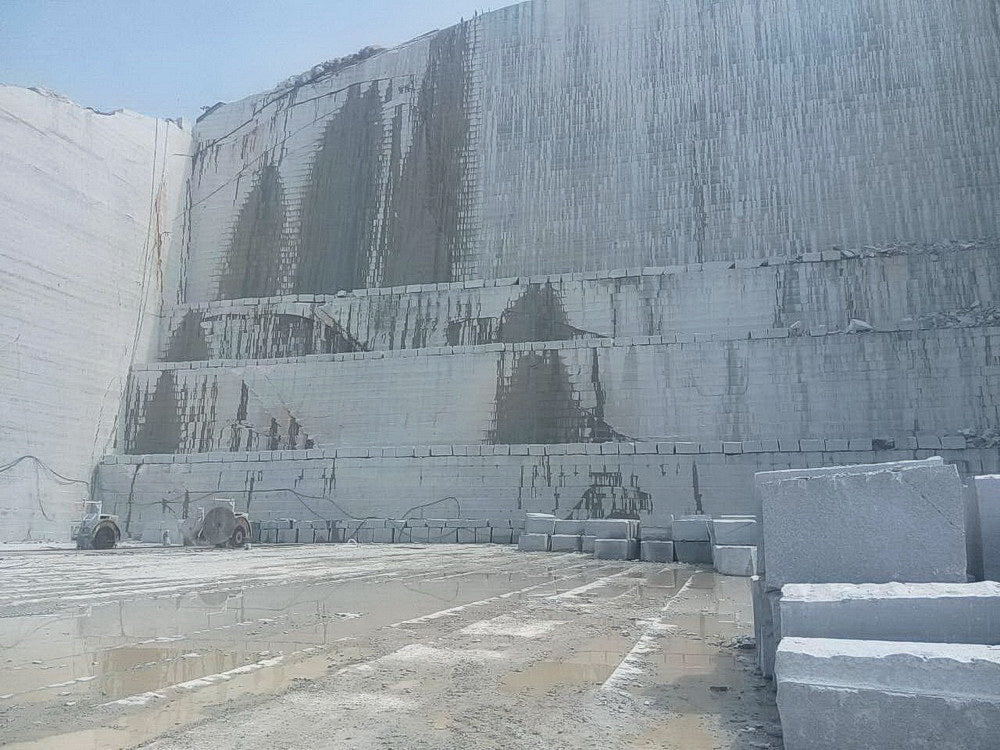Checking Out the Hidden Midst of Granite Quarrying: Unveiling Nature's Work of art
The world of granite quarrying is a realm where nature's old processes fulfill human ingenuity in a cooperative dance that has actually shaped landscapes and civilizations for centuries. From the detailed geological formations that birth this majestic rock to the meticulous strategies and equipment used in its extraction, the trip into granite quarrying is a testimony to the unified coexistence in between man and nature. As we begin to unwind the layers of this sector, we are met with a tapestry of environmental factors to consider, imaginative undertakings, and international effects that beckon us to explore even more the surprise midsts of this natural masterpiece.

Geological Development of Granite
Granite, a sort of igneous rock, develops deep within the Planet's crust with an intricate procedure of cooling and solidification. This natural stone originates from the slow formation of liquified magma deep below the Planet's surface area. As lava cools down, mineral crystals such as feldspar, quartz, and mica start to develop, developing the unique speckled patterns and shades feature of granite. granite quarries in south africa. The cooling procedure can take countless years, enabling the advancement of large mineral grains that give granite its distinctive appearance and longevity.
Geologically, granite is categorized as a felsic intrusive rock, suggesting it is abundant in silica minerals and forms from lava that horns in existing rock formations. This invasive formation process adds to granite's coarse-grained appearance and high compressive stamina, making it a popular selection for building and architectural objectives. As a result of its elegance, toughness, and resistance to warm and scrapes, granite has become an in-demand material for kitchen counters, flooring, and attractive elements in both household and industrial setups.
Quarrying Methods and Tools
Using innovative machinery and specific methods, quarrying procedures extract granite from natural down payments with efficiency and accuracy. The procedure begins with the identification of suitable granite down payments with geological studies. Once a practical site is situated, the removal stage begins. Ruby wire saws are generally used to puncture the granite, as they offer precision cutting without creating damage to the stone. These cable saws are run by competent professionals that meticulously navigate the cuts to guarantee optimal return from the quarry.
Large excavators and loaders are after that used to remove the cut granite blocks from the quarry. These heavy-duty devices can manage the enormous weight of the granite obstructs, making transport within the quarry website and loading onto trucks for further processing efficient. Additionally, drilling equipment geared up with diamond-tipped drills is used to produce holes for splitting the granite into smaller, more manageable pieces. This regulated splitting procedure makes certain look at here marginal waste and optimum application of the removed granite. Generally, the combination of sophisticated equipment and knowledgeable labor is essential in the quarrying procedure to extract granite successfully while preserving its quality.
Environmental Impact and Sustainability
With the enhancing emphasis on environmental consciousness in commercial practices, the granite quarrying market is under analysis for its impact on ecological communities and natural resources. Quarrying for granite can have substantial environmental repercussions, consisting of habitat damage, dirt disintegration, and water pollution.
To alleviate these ecological impacts, sustainable quarrying methods are being created. Companies are executing actions such as reforestation programs, water recycling systems, and dust suppression methods to decrease their eco-friendly footprint. Furthermore, some quarries are currently making use of eco-friendly energy sources to power their operations, minimizing dependence on nonrenewable fuel sources.
Artistry in Granite Sculpting
The intricate process of transforming raw granite into sensational jobs of art calls for exceptional skill and craftsmanship. granite quarries in south africa. Granite sculpting is a precise art type that requires persistence, creative thinking, and an intense understanding of the rock's properties. Sculptors must possess a deep gratitude company website for the natural charm of granite and the ability to visualize and extract the covert artistry within it
Artistry in granite sculpting involves a collection of specific actions. The carver begins by choosing the ideal granite slab, thinking about aspects such as color, veining, and appearance. Utilizing specialized devices like knives, grinders, click here now and polishers, the carver very carefully carves, forms, and improves the stone to bring their vision to life. Each chisel mark, each contour, and each gloss is an intentional and calculated action in the direction of perfection.
The final outcome of granite sculpting is a spectacular work of art that showcases the carver's talent and the integral charm of the rock itself. Whether it's a marvelous statue, a detailed fountain, or a detailed alleviation carving, granite sculptures stand as testaments to human creative thinking and the enduring attraction of natural products.
Global Value of Granite Industry
Playing a crucial role in building and construction and architectural jobs worldwide, the granite industry serves as a keystone in the global economic climate. With its versatility, toughness, and aesthetic appeal, granite has actually become a favored selection for a wide variety of applications, consisting of countertops, flooring, monoliths, and exteriors. The industry not only supplies employment possibility however additionally drives financial growth with exports and regional intake.

In addition, the granite market plays a vital duty in sustainable growth initiatives by advertising accountable quarrying techniques and buying eco-friendly innovations. As the demand for all-natural stone continues to increase, the worldwide relevance of the granite industry in forming metropolitan landscapes and maintaining cultural heritage can not be overemphasized.
Conclusion
In conclusion, the granite quarrying market plays a vital duty in showcasing nature's masterpiece. From its geological formation to the artistry in sculpting, granite continues to hold worldwide relevance.